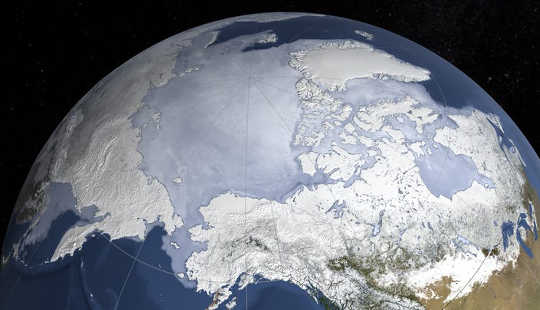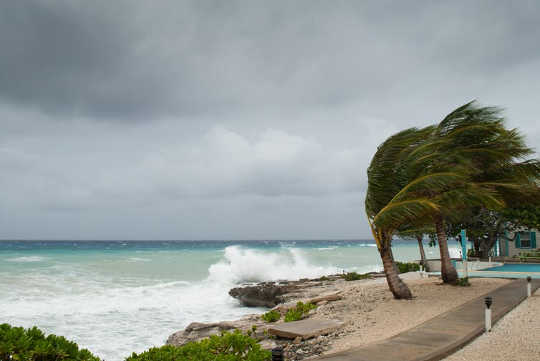
elRoce / redőny
A világ klímatudósai megszólaltak: ha 1.5-re akarjuk korlátozni az ember által előidézett globális felmelegedést? valószínűleg megtehetjük. De nehéz lesz, tekintve, honnan indulunk.
Ez a következtetés a új jelentés by the UN’s Intergovernmental Panel on Climate Change (IPCC). The focus on 1.5? is the result of years of international negotiation. Starting in 1994, a central aim of the UN’s climate change efforts (the Framework Convention on Climate Change, or UNFCCC) was to stabilise greenhouse gas concentrations at a level that would “prevent dangerous anthropogenic interference with the climate system”. Much was written on what this meant, particularly the word “dangerous”.
Az éghajlatváltozás negatív hatásai a kontinuumon jelentkeznek, és nehéz és vitás meghatározni azt a pontot, ahol az éghajlatváltozás veszélyessé válik. Másrészt az éghajlatváltozással kapcsolatos tárgyalások nehézek, ha nincsenek célok, amelyek elérése érdekében dolgozni kell.
Fifteen years later, the UNFCCC’s Copenhagen Accord introduced a 2? target, and its 2015 Paris megállapodás was even more specific: it “aims to strengthen the global response to the threat of climate change … by holding the increase in … temperature to well below 2? above pre-industrial levels and pursuing efforts to limit the … increase to 1.5?”.
Az IPCC tudományos tanácsokat ad az UNFCCC -nek, amely politikát alakít, és maga az IPCC soha nem határozott meg hőmérsékleti célt. Mindazonáltal öt „aggodalomra okot” felsorol az éghajlatváltozás kockázataival. Ide tartoznak az olyan hatások, mint az „egyedi és veszélyeztetett ökoszisztémák és kultúrák” (például korallzátonyok), valamint a „szélsőséges időjárási események”, amelyek mindegyike a „nem észlelhető” és a „nagyon magas” skálán van besorolva. Az IPCC legújabb (2014) Ötödik értékelés of the scientific evidence found that at around 1.5? warming there was a transition mérsékeltől a magas kockázatig fenyegetett ökoszisztémák és kultúrák, valamint szélsőséges időjárási események esetén. Így következetes a párizsi és az IPCC értékelése.
 Az éghajlatváltozás gyakoribbá teszi a szélsőséges időjárás egyes típusait. Drew McArthur/Shutterstock
Az éghajlatváltozás gyakoribbá teszi a szélsőséges időjárás egyes típusait. Drew McArthur/Shutterstock
The Paris Agreement asked the IPCC to report on the impacts of global warming of 1.5?, and this new publication is the result. Its tone is not “we must avoid 1.5? warming”, as you might think from many commentators, but more “if we want to avoid 1.5? warming, this is what must be done”. The report contrasts the impact of 1.5? and 2? warmings, giving information on what would be gained by the extra effort needed to limit warming to 1.5?.
As the IPCC’s reports are largely based on a critical assessment and synthesis of published scientific papers, many of its latest conclusions are unsurprising. There are many well recognised uncertainties in understanding climate change - for instance, even if we set a course aiming to hit 1.5? (which is mostly determined by future CO? emissions), we could end up hitting, say, 1? or 2? instead. The report provides uncertainty ranges in its estimates and confidence levels, based on expert judgement.
The new report tells us that human activity has already caused about 1? of global warming, while at the present rate of warming (0.2? per decade) we’ll hit 1.5? by about 2040. National pledges made as part of the Paris Agreement still mean we are on course for warming of about 3? by 2100, meaning four of the five “reasons for concern” would then be in the high to very-high risk category.
Achieving the 1.5? target will require anthropogenic CO? emissions to decline by 45% by 2030 (relative to 2010). By 2050, they will need to reach “net zero” - any further CO? emissions due to human activity would then have to be matched by szándékos eltávolítás of CO? already in the atmosphere, including by planting trees. Net zero would have to occur by around 2075 to meet a 2? target.
 Erdőfelújítási projekt Thaiföldön. Somrerk Witthayanantw/Shutterstock
Erdőfelújítási projekt Thaiföldön. Somrerk Witthayanantw/Shutterstock
Many illustrations are given for the difference between 1.5? and 2? worlds. At 1.5?, summertime Arctic sea ice is projected to disappear once per century, compared to once per decade at 2?; 8% of plants that have been studied would lose half their climatically-suitable area, compared to 16%; sea level rise would be 10cm less (with 10m fewer people impacted at today’s population levels); and while coral reefs might decline by a further 80% at 1.5?, they could virtually disappear at 2?.
The report identifies various routes by which emissions cuts would limit warming to 1.5?; each makes assumptions about future changes in, for example, economic strategy, population growth and the rate at which low carbon energy is adopted. The IPCC recognises the challenges are “unprecedented in scale” but notes, for example, “the feasibility of solar energy, wind energy and electricity storage mechanisms have substantially improved over the past few years”.
The report is sensitive to the fact that changes required to meet 1.5? must be consistent with the UN’s wider fenntartható fejlesztési célok. Az éghajlatváltozás korlátozása segít elérni az egészséggel, a tiszta energiával, a városokkal és az óceánokkal kapcsolatos célokat. De vannak negatív hatások másokra (szegénység, éhség, víz, energiahozzáférés), „ha nem gondosan kezelik”.
Szóval hol tovább? Természetesen a következtetésekről sok szinten vitatkozni fognak, de az UNFCCC válasza a következő ülésen, a lengyelországi Katowicében, december elején lesz.![]()
A szerzőről
Keith Shine, a Regius meteorológiai és klímatudományi professzora, University of Reading
Ezt a cikket újra kiadják A beszélgetés Creative Commons licenc alatt. Olvassa el a eredeti cikk.
Kapcsolódó könyvek
at InnerSelf Market és Amazon






















